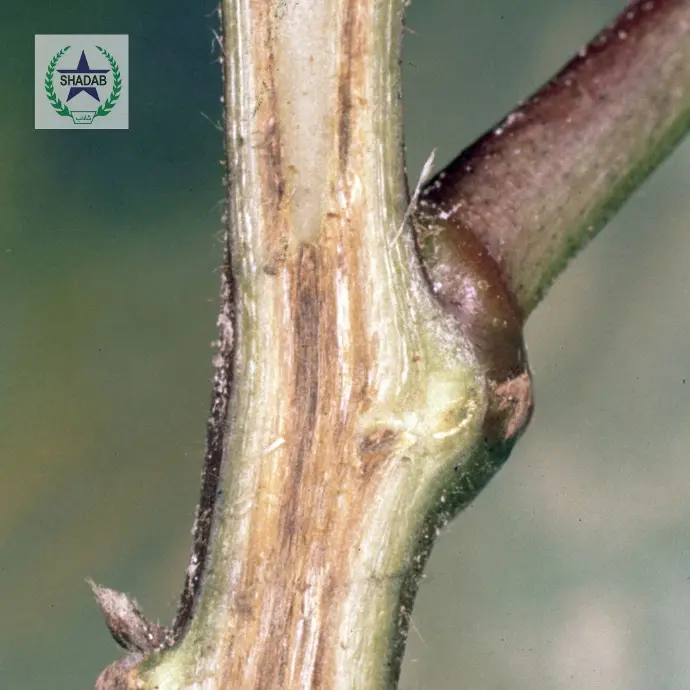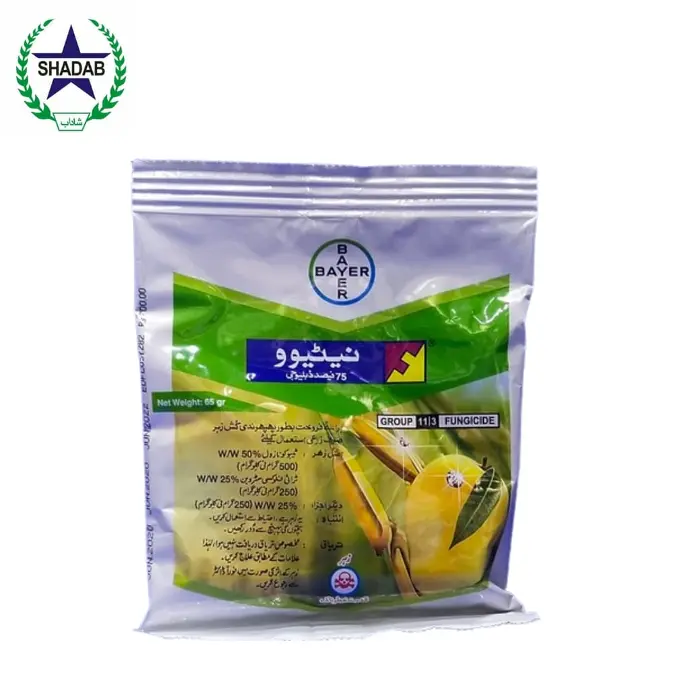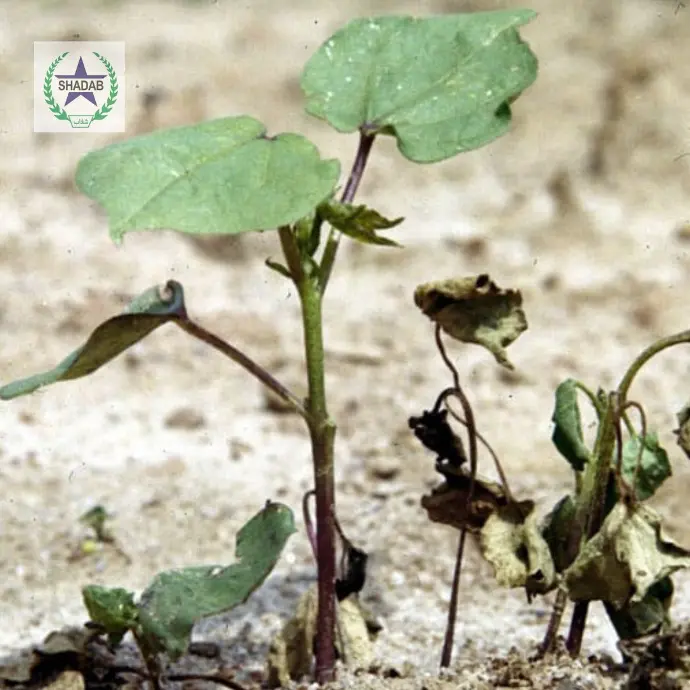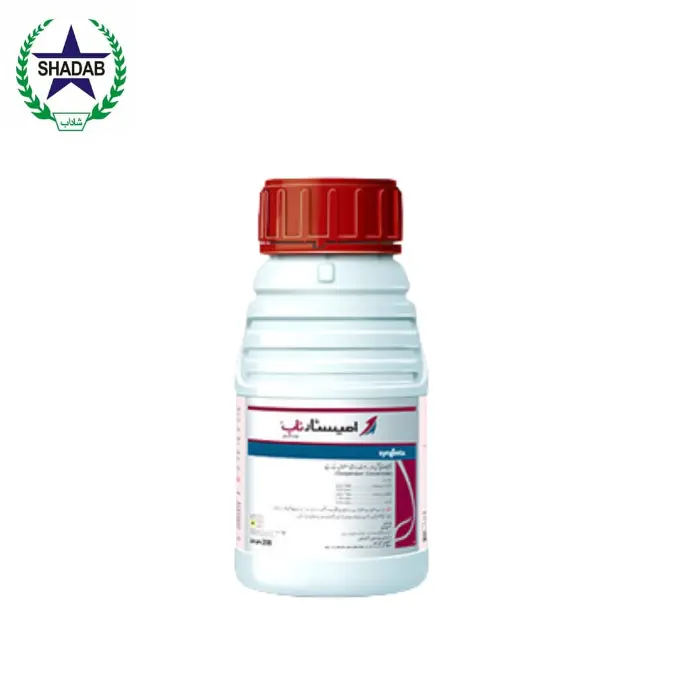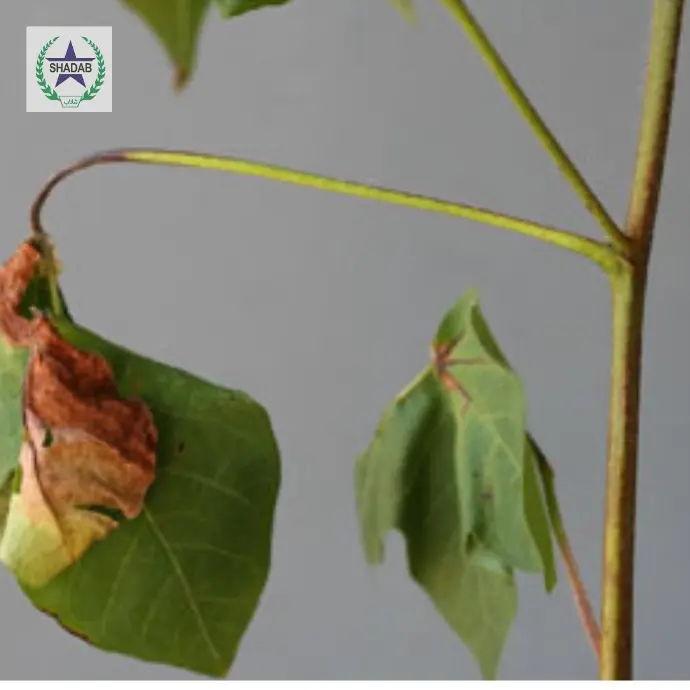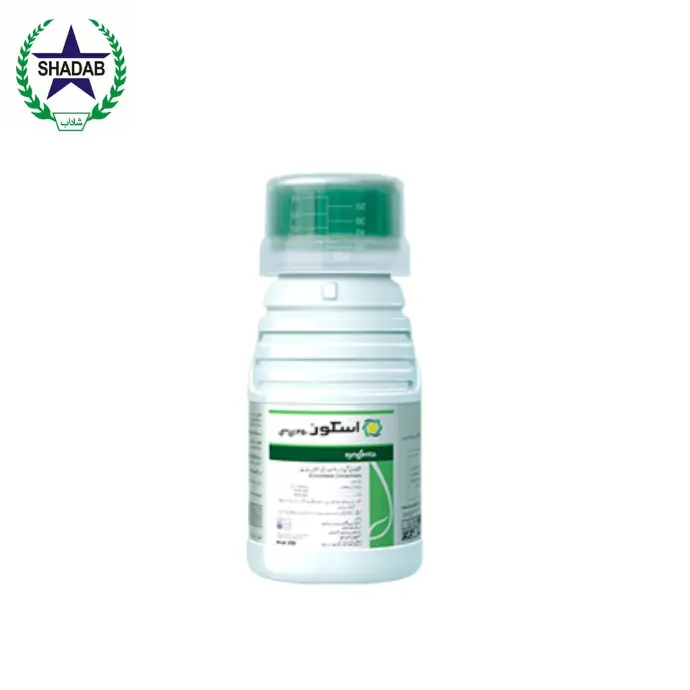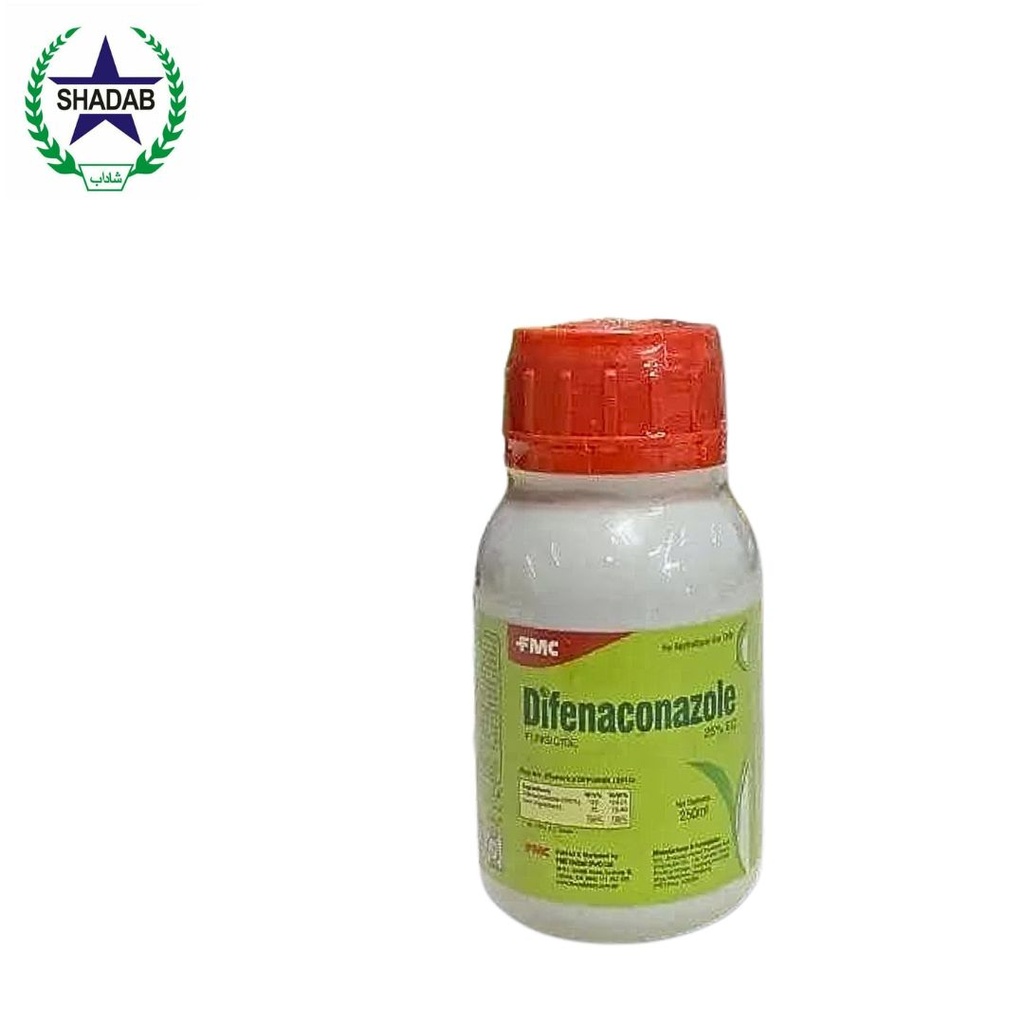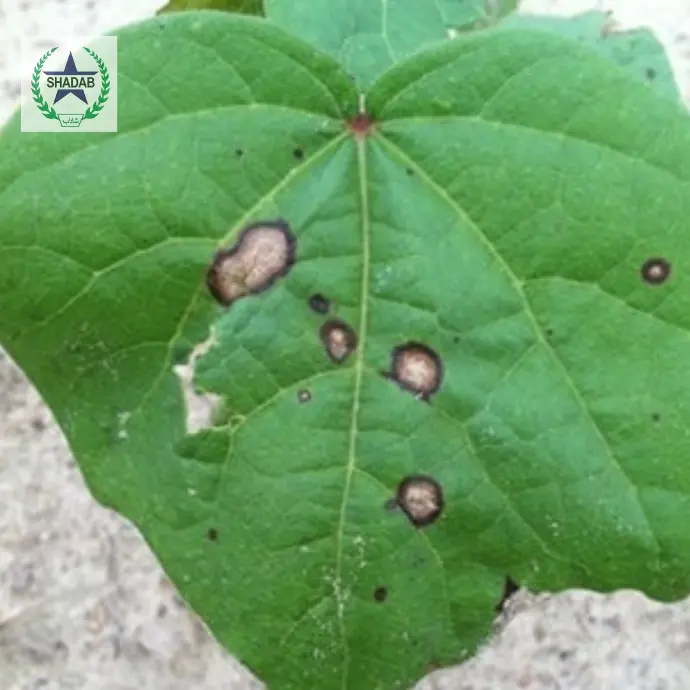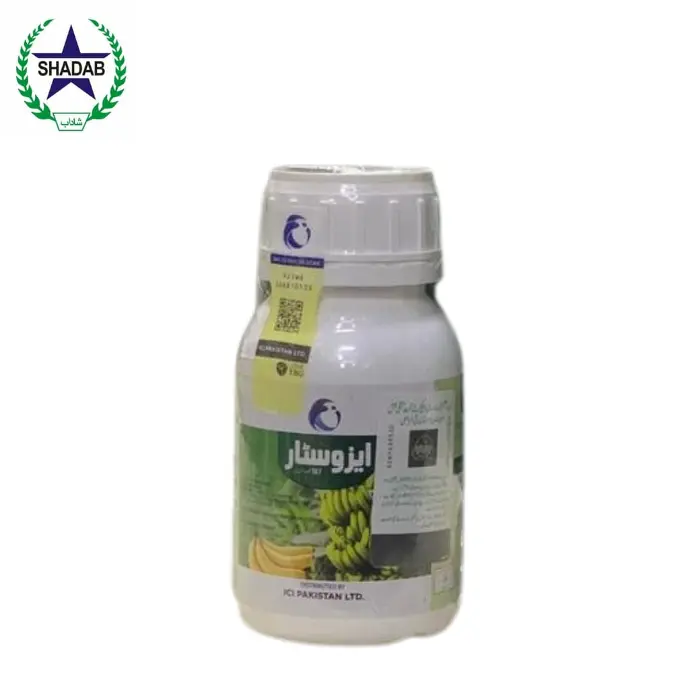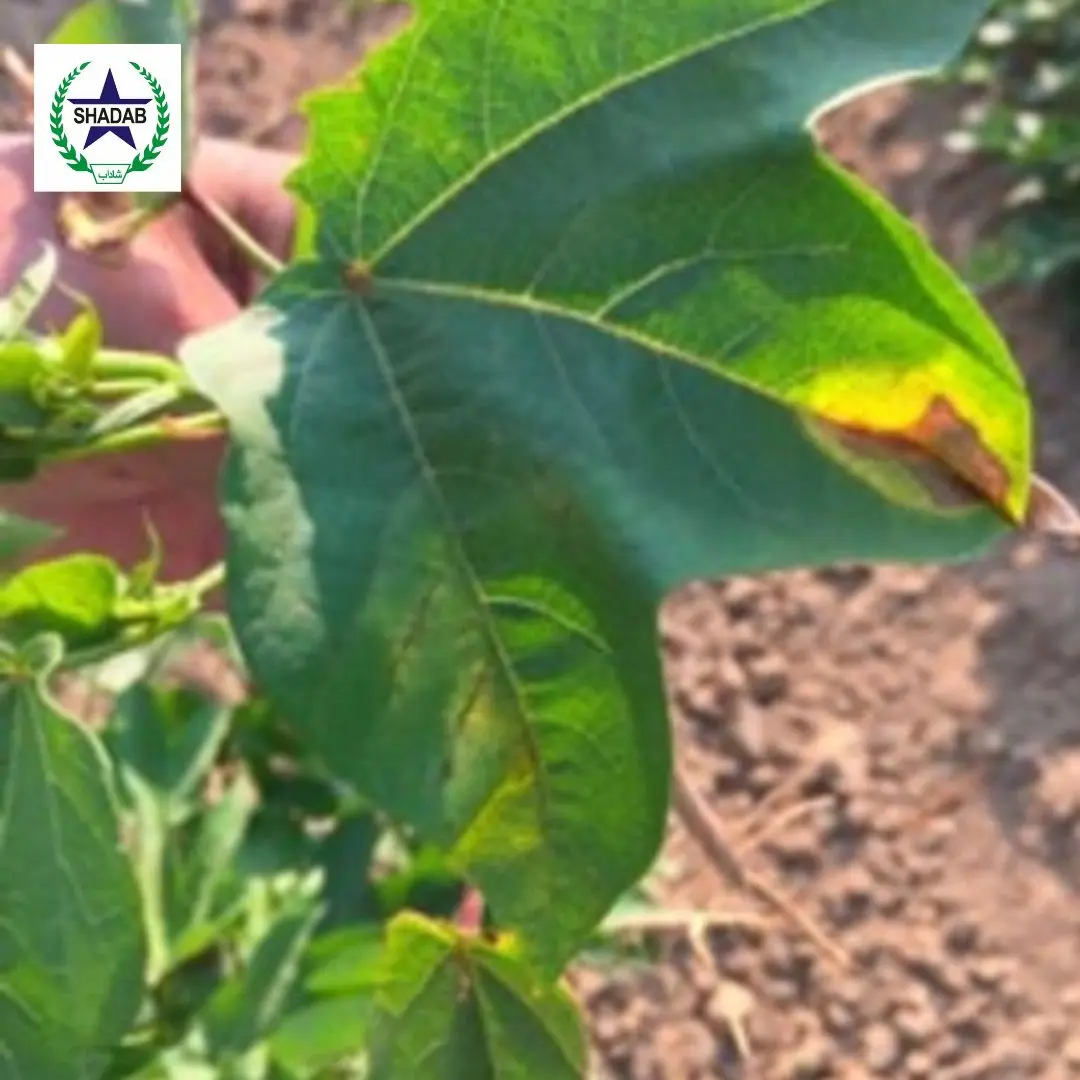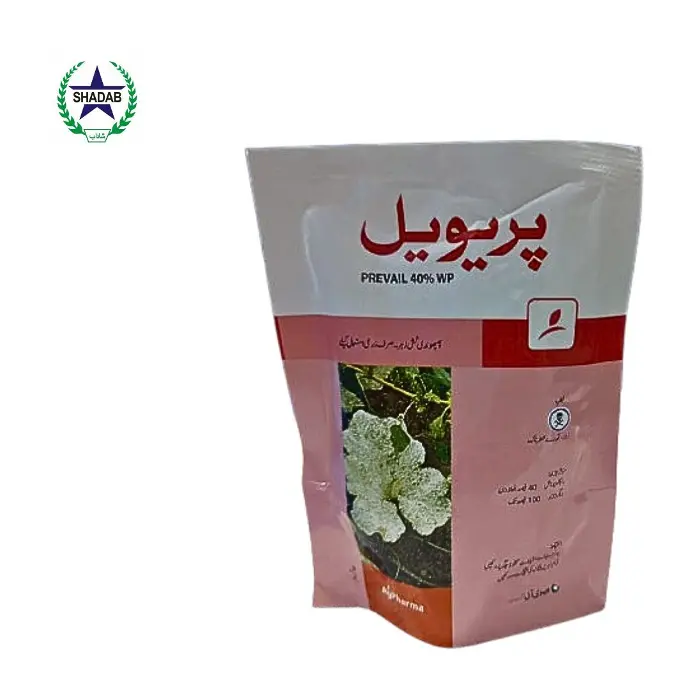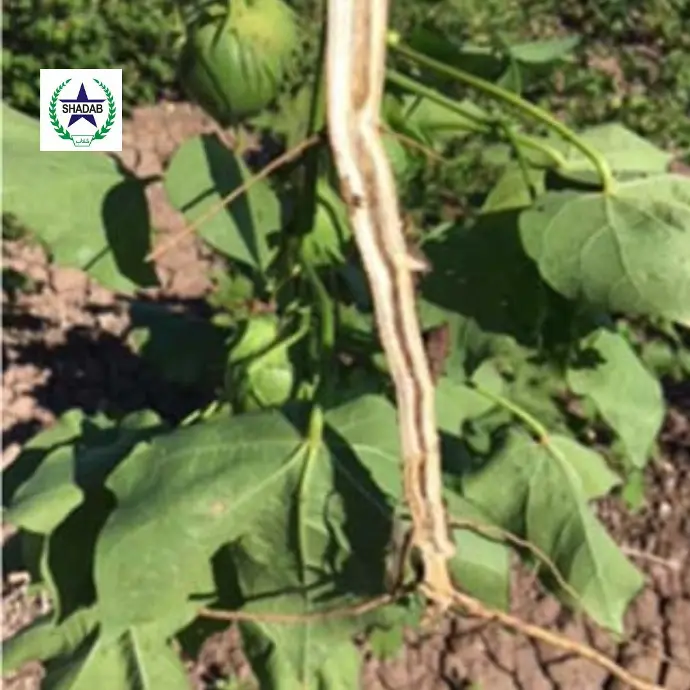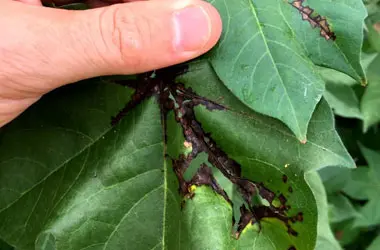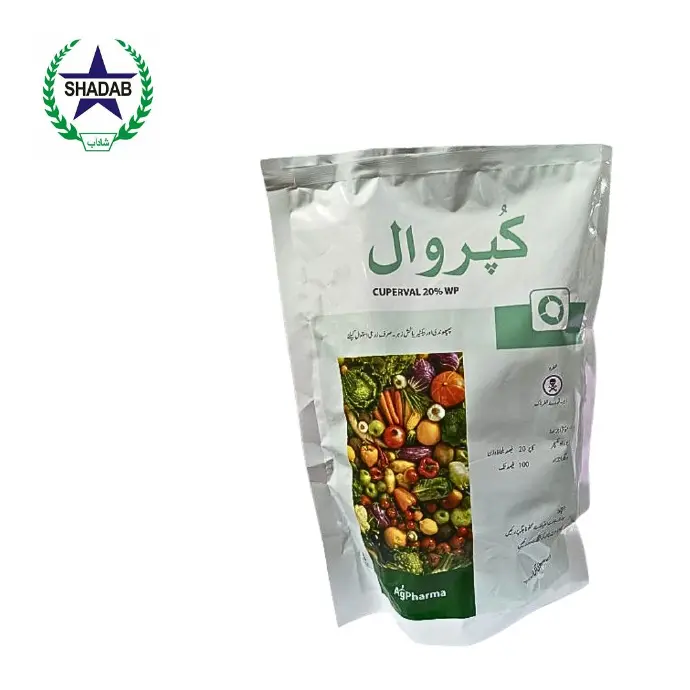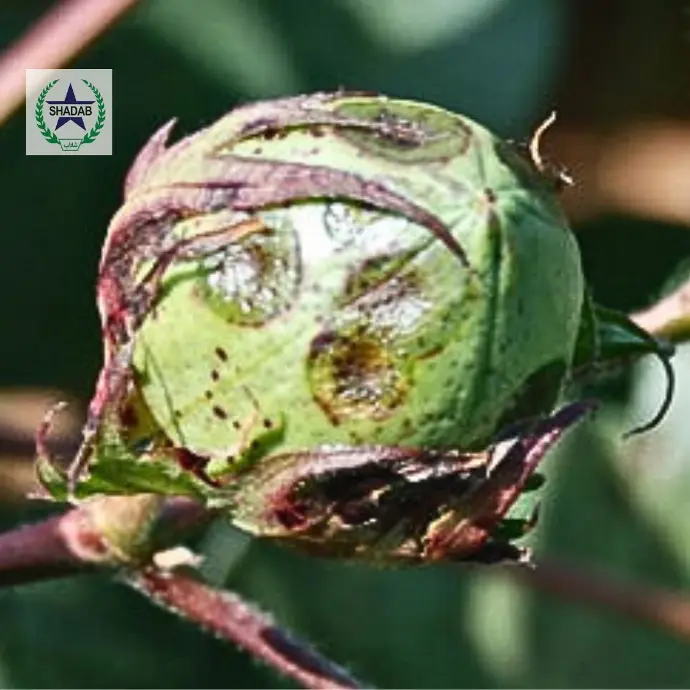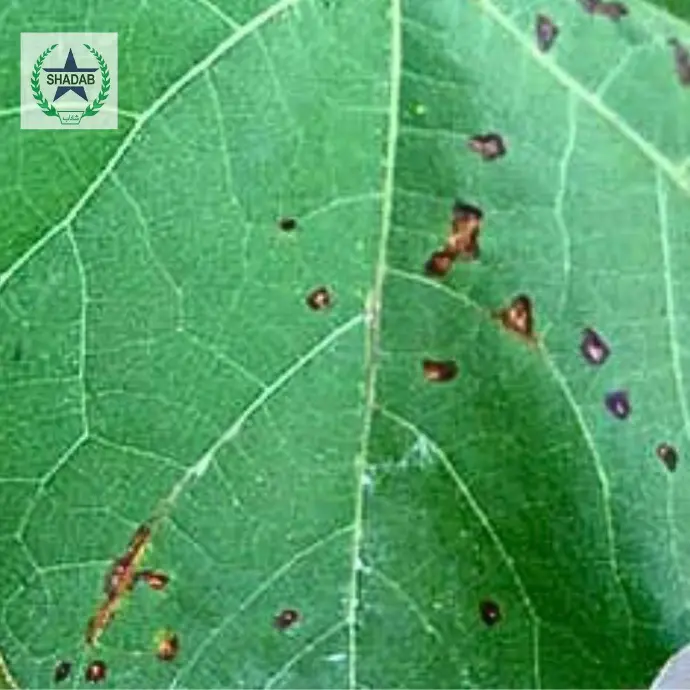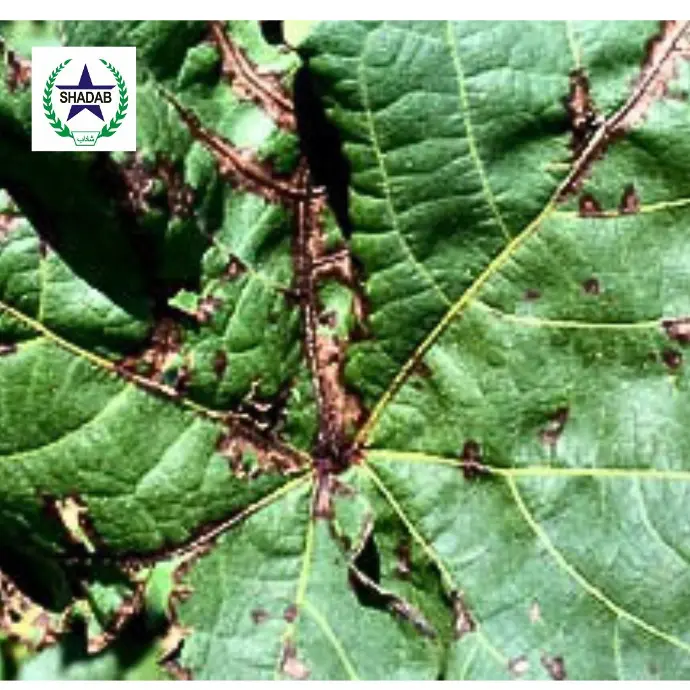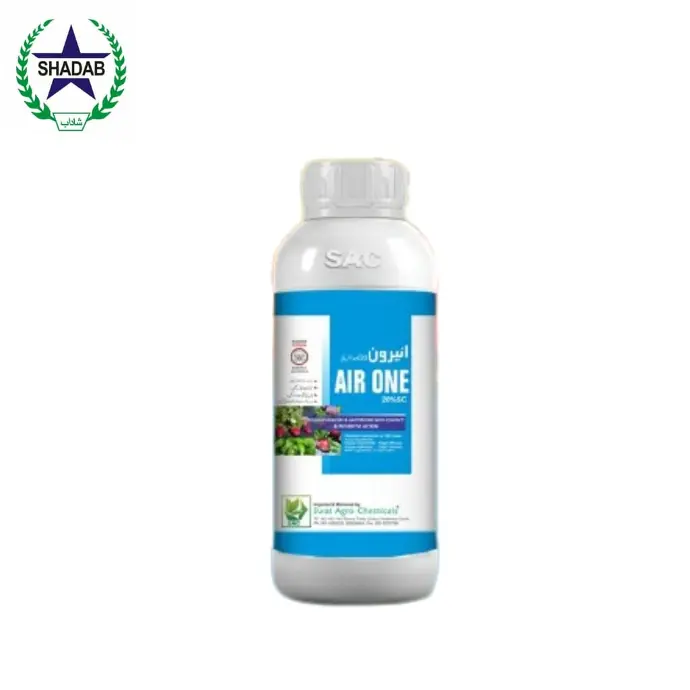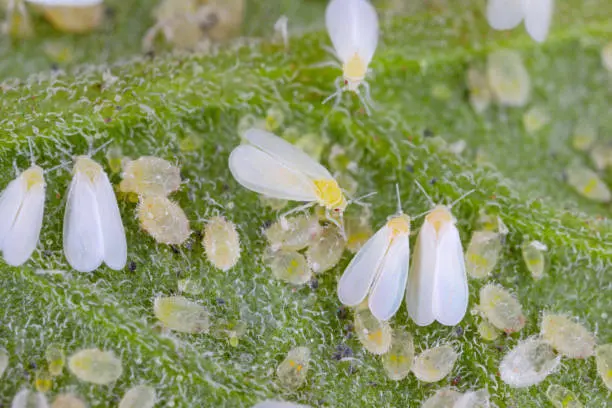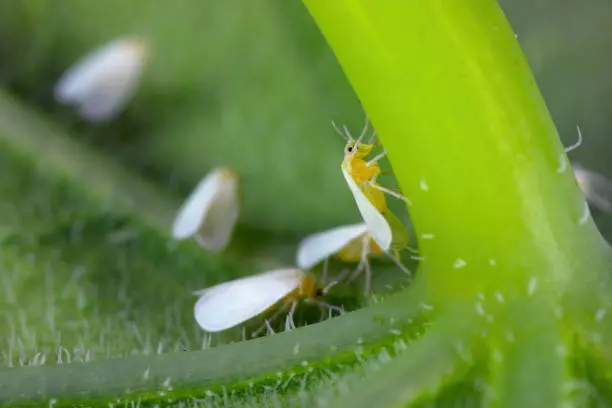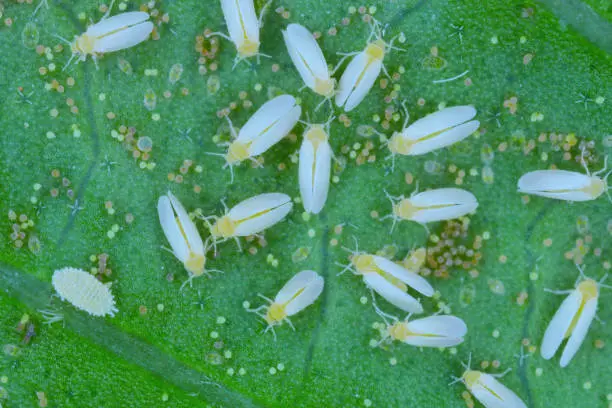Cotton Disease & Management
1.Twig and Stem Blight of Cotton
Twig and Stem Blight of Cotton, caused by Lasiodiplodia theobromae, presents distinct symptoms characterized by dieback that begins at the twigs. This condition leads to the formation of multiple lesions that merge on the stem, ultimately resulting in the death of the affected branches. In addition, the presence of numerous solitary black pycnidia can be observed on the symptomatic twigs, indicating the severity of the infection.Effective management of this disease necessitates several key practices. Initially, treating seeds is essential to prevent the onset of the disease. It is also important to maintain adequate spacing between plants and rows to promote air circulation. Proper irrigation practices must be followed, ensuring that fields are not over-irrigated, as excessive moisture can create a conducive environment for fungal proliferation. In cases where favorable conditions persist for more than two days, the application of a protectant spray is recommended.When applying fungicides, attention should be given to the wind direction to ensure effective coverage. The recommended method is to spray the plants from the top down. Suitable fungicides include Amistar Top 325 Soluble concentrate (Azoxystrobin + Difenoconazole) at a rate of 2.0 cubic centimetre per liter of water, Nativo 75% WG (Tebuconazole + Trifloxystrobin) at 1 g per liter of water, and Score 250 emulsifiable concentrate (EC) (Difenoconazole) at 1 cubic centimetre per liter of water. These measures, when implemented correctly, can significantly mitigate the impact of Twig and Stem Blight on cotton crops.The application of flooding techniques in cotton cultivation involves the use of fosetyl aluminum anand metalaxyl mancozeb,and in addition sulphur also used to control the blight which increases the effectiveness of both chemicals and which have proven to be effective in managing twig and stem blight in cotton plants.
Lasiodiplodia theobromae کی وجہ سے روئی کی ٹہنی اور تنے کی دھجیاں، ٹہنیوں سے شروع ہونے والی ڈائی بیک کی خصوصیت والی مخصوص علامات پیش کرتی ہیں۔ یہ حالت متعدد گھاووں کی تشکیل کا باعث بنتی ہے جو تنے پر ضم ہو جاتے ہیں، جس کے نتیجے میں متاثرہ شاخوں کی موت واقع ہو جاتی ہے۔ اس کے علاوہ، علامتی ٹہنیوں پر بے شمار تنہا سیاہ پکنیڈیا کی موجودگی دیکھی جا سکتی ہے، جو انفیکشن کی شدت کو ظاہر کرتی ہے۔ اس بیماری کے موثر انتظام کے لیے کئی اہم طریقوں کی ضرورت ہے۔ بیماری کے آغاز کو روکنے کے لیے ابتدائی طور پر بیجوں کا علاج ضروری ہے۔ ہوا کی گردش کو فروغ دینے کے لیے پودوں اور قطاروں کے درمیان مناسب فاصلہ برقرار رکھنا بھی ضروری ہے۔ آبپاشی کے مناسب طریقوں پر عمل کرنا ضروری ہے، اس بات کو یقینی بناتے ہوئے کہ کھیتوں کو ضرورت سے زیادہ آبپاشی نہ کی جائے، کیونکہ ضرورت سے زیادہ نمی فنگل کے پھیلاؤ کے لیے سازگار ماحول پیدا کر سکتی ہے۔ ایسی صورتوں میں جہاں سازگار حالات دو دن سے زیادہ برقرار رہیں، حفاظتی سپرے لگانے کی سفارش کی جاتی ہے۔فنگسائڈز کا استعمال کرتے وقت، ہوا کی سمت پر توجہ دی جانی چاہیے تاکہ مؤثر کوریج کو یقینی بنایا جا سکے۔ تجویز کردہ طریقہ یہ ہے کہ پودوں کو اوپر سے نیچے سپرے کریں۔ مناسب فنگسائڈز میں شامل ہیں Amistar Top 325 Soluble Concentrate (Azoxystrobin + Difenoconazole) 2.0 کیوبک سینٹی میٹر فی لیٹر پانی کی شرح سے، Nativo 75% WG (Tebuconazole + Trifloxystrobin) 1 g فی لیٹر پانی، اور اسکور 250 concentreable emulsifiable (Difenoconazole) 1 کیوبک سینٹی میٹر فی لیٹر پانی پر۔ جب یہ اقدامات درست طریقے سے لاگو ہوتے ہیں تو کپاس کی فصلوں پر ٹہنی اور تنے کے بلائٹ کے اثرات کو نمایاں طور پر کم کر سکتے ہیں۔ دونوں کیمیکلز کی افادیت کو بڑھاتا ہے اور جو کپاس کے پودوں میں ٹہنی اور تنے کی خرابی کے انتظام میں کارآمد ثابت ہوئے ہیں۔
2. Asochyta blight
Asochyta blight presents distinct symptoms characterized by the appearance of brown or gray lesions on the foliage, which are often encircled by a reddish halo. Additionally, elongated cankers of a red-purple hue may develop on the stems, leading to the wilting and subsequent demise of the leaves situated above these affected areas.In terms of management strategies, it is important to note that there are currently no fungicides approved for application in cotton cultivation. After the harvest, it is advisable to incorporate the crop residues into the soil. Furthermore, it has been observed that crop rotation does not significantly contribute to the control of this particular disease.The pathogen responsible for the condition is Ascochyta gossypii, also known as Phoma exigua. The manifestation of Ascochyta Blight is characterized by the appearance of lesions on various plant parts, including cotyledons, leaves, stems, and bolls. The lesions on cotyledons and leaves are typically circular, varying in color from white to light brown, and measure approximately 2 mm in diameter. In contrast, the elongated cankers on stems exhibit a color range from reddish-purple to black or ash gray. Additionally, small black fruiting bodies may be found embedded within the affected tissues, contributing to the symptoms observed.
مختلف علامات پیش کرتا ہے جس کی خصوصیات پودوں پر بھورے یا سرمئی گھاووں کی ظاہری شکل سے ہوتی ہے، جو اکثر سرخی مائل ہالہ سے گھرے ہوتے ہیں۔ مزید برآں، تنے پر سرخ-جامنی رنگت کے لمبے ناسور پیدا ہو سکتے ہیں، جو ان متاثرہ علاقوں کے اوپر واقع پتوں کے مرجھانے اور اس کے نتیجے میں مرنے کا باعث بن سکتے ہیں۔ انتظامی حکمت عملی کے لحاظ سے، یہ نوٹ کرنا ضروری ہے کہ فی الحال کوئی فنگسائڈس منظور شدہ نہیں ہیں۔ کپاس کی کاشت میں درخواست کے لیے۔ کٹائی کے بعد، فصل کی باقیات کو مٹی میں شامل کرنے کا مشورہ دیا جاتا ہے۔ مزید برآں، یہ بھی دیکھا گیا ہے کہ فصل کی گردش اس خاص بیماری کے کنٹرول میں اہم کردار ادا نہیں کرتی ہے۔ اس حالت کا ذمہ دار پیتھوجین Ascochyta gossypii ہے، جسے Phoma exigua بھی کہا جاتا ہے۔ Ascochyta Blight کا مظہر پودوں کے مختلف حصوں پر گھاووں کی ظاہری شکل سے ظاہر ہوتا ہے، بشمول cotyledons، پتوں، تنوں اور بالوں پر۔ cotyledons اور پتوں پر گھاو عموماً گول ہوتے ہیں، رنگ میں سفید سے ہلکے بھورے تک مختلف ہوتے ہیں، اور قطر میں تقریباً 2 ملی میٹر کی پیمائش ہوتی ہے۔ اس کے برعکس، تنے پر لمبے لمبے کینکر سرخی مائل جامنی سے سیاہ یا راکھ بھوری رنگ کی حد کو ظاہر کرتے ہیں۔ مزید برآں، چھوٹے سیاہ پھل دار جسم متاثرہ ٹشوز کے اندر سرایت شدہ پائے جاتے ہیں، جو مشاہدہ شدہ علامات میں حصہ ڈالتے ہیں۔
In terms of diagnostics, it is important to note that dark borders often encircle the necrotic regions on leaves and cotyledons, with spots that may resemble targets. Ascochyta Blight tends to manifest early in the growing season, with lesions frequently displaying small black fruiting structures. The disease has been reported across most major cotton-producing areas, although significant yield loss is infrequent. Such losses may occur under specific conditions, including prolonged cloud cover, cooler temperatures, and increased precipitation. To manage this disease, the application of fungicides such as chlorothalonil, azoxystrobin, difenoconazole, and tebuconazole is recommended. Additionally, using treated seeds, avoiding planting during cool, rainy weather, and incorporating cotton residue to enhance decomposition are effective strategies in fields previously affected by Ascochyta Blight.
تشخیص کے لحاظ سے، یہ نوٹ کرنا ضروری ہے کہ تاریک سرحدیں اکثر پتوں اور پر خطوں کو گھیر لیتی ہیں، ایسے دھبے جو اہداف سے ملتے جلتے ہو سکتے ہیں۔ Ascochyta Blight بڑھتے ہوئے موسم کے اوائل میں ظاہر ہوتا ہے، گھاووں کے ساتھ اکثر چھوٹے سیاہ پھل دار ڈھانچے ظاہر ہوتے ہیں۔ اس بیماری کی اطلاع کپاس پیدا کرنے والے زیادہ تر بڑے علاقوں میں ہوئی ہے، حالانکہ نمایاں پیداوار کا نقصان کبھی کبھار ہی ہوتا ہے۔ اس طرح کے نقصانات مخصوص حالات میں ہو سکتے ہیں، بشمول طویل بادل کا احاطہ، ٹھنڈا درجہ حرارت، اور بارش میں اضافہ۔ اس بیماری پر قابو پانے کے لیے، فنگسائڈز جیسے کلوروتھالونیل، ایزوکسیسٹروبین، ڈیفینوکونازول، اور ٹیبوکونازول کے استعمال کی سفارش کی جاتی ہے۔ مزید برآں، علاج شدہ بیجوں کا استعمال، ٹھنڈے، بارش کے موسم میں پودے لگانے سے گریز کرنا، اور سڑن کو بڑھانے کے لیے کپاس کی باقیات کو شامل کرنا اس سے پہلے Ascochyta Blight سے متاثر ہونے والے کھیتوں میں موثر حکمت عملی ہیں۔
3. Cercospora leaf spot
It is characterized by the appearance of circular red lesions on the foliage, which progressively enlarge and develop a white or gray center. These lesions frequently exhibit a distinctive pattern of concentric rings and are bordered by a red margin. Additionally, dark gray spore masses can be observed within the centers of the lesions, contributing to their overall dark gray appearance.To manage this condition effectively, it is advisable to incorporate crop residues into the soil, thereby diminishing the levels of inoculum present. Ensuring that plants receive sufficient irrigation and nutrients is also crucial for their health. In cases where susceptible cultivars are affected, the application of suitable foliar fungicides may be necessary to mitigate the impact of the disease.1. Cercospora gossypina, the causative agent of Cercospora leaf spot, is typically characterized as a weak pathogen that can proliferate rapidly under favorable environmental conditions. However, it may exhibit more aggressive behavior when plants experience stress due to nutrient deficiencies, drought, or a combination of various stressors prior to leaf senescence. Effective management of this disease can be achieved through the application of fungicides such as azoxystrobin, tebuconazole, difenoconazole, and chlorothalonil.In fields that have previously suffered from Ascochyta Blight, additional management strategies are recommended. These include the use of treated seeds, refraining from planting during cool and rainy conditions, and incorporating cotton residues to promote their decomposition. Such practices can significantly contribute to the control of Cercospora leaf spot and improve overall crop health.
اس کی خصوصیت پودوں پر گول سرخ گھاووں کی ظاہری شکل سے ہوتی ہے، جو آہستہ آہستہ بڑھتے اور سفید یا سرمئی مرکز بنتے ہیں۔ یہ زخم اکثر مرتکز حلقوں کے ایک مخصوص نمونے کی نمائش کرتے ہیں اور ان کی سرحد سرخ حاشیے سے ہوتی ہے۔ مزید برآں، گھاووں کے مراکز میں گہرے بھوری رنگ کے بیضوں کا مشاہدہ کیا جا سکتا ہے، جو ان کی مجموعی طور پر گہرے سرمئی شکل میں حصہ ڈالتے ہیں۔ اس حالت کو مؤثر طریقے سے سنبھالنے کے لیے، فصل کی باقیات کو مٹی میں شامل کرنے کا مشورہ دیا جاتا ہے، اس طرح موجود انوکولم کی سطح کم ہوتی ہے۔ اس بات کو یقینی بنانا کہ پودوں کو وافر مقدار میں آبپاشی اور غذائی اجزاء ملیں ان کی صحت کے لیے بھی بہت ضروری ہے۔ ایسی صورتوں میں جہاں حساس کھیتی متاثر ہوتی ہے، بیماری کے اثرات کو کم کرنے کے لیے مناسب پودوں کی فنگسائڈز کا استعمال ضروری ہو سکتا ہے۔پتوں کے دھبے، عام طور پر ایک کمزور روگزن کے طور پر نمایاں ہوتے ہیں جو سازگار ماحولیاتی حالات میں تیزی سے پھیل سکتے ہیں۔ تاہم، یہ زیادہ جارحانہ رویے کا مظاہرہ کر سکتا ہے جب پودوں کو غذائی اجزاء کی کمی، خشک سالی، یا پتے کے سنسنی سے پہلے مختلف تناؤ کے امتزاج کی وجہ سے تناؤ کا سامنا کرنا پڑتا ہے۔ اس بیماری کا موثر انتظام فنگسائڈز جیسے azoxystrobin، tebuconazole، difenoconazole اور chlorothalonil کے استعمال سے حاصل کیا جا سکتا ہے۔ ان شعبوں میں جو پہلے Ascochyta Blight کا شکار ہو چکے ہیں، اضافی انتظامی حکمت عملیوں کی سفارش کی جاتی ہے۔ ان میں علاج شدہ بیجوں کا استعمال، ٹھنڈی اور بارش کے حالات میں پودے لگانے سے گریز کرنا، اور ان کے گلنے کو فروغ دینے کے لیے کپاس کی باقیات کو شامل کرنا شامل ہے۔ اس طرح کے طریقوں سے Cercospora کے پتوں کے داغ کو کنٹرول کرنے اور فصل کی مجموعی صحت کو بہتر بنانے میں نمایاں طور پر مدد مل سکتی ہے۔
4. Fusarium wilt
It is characterized by a range of symptoms that affect both young and mature plants. Initially, cotyledons and seedling leaves exhibit wilting, with the edges of the cotyledons turning chlorotic before progressing to necrosis. As the disease advances, older plants display similar signs of wilting and leaf chlorosis. The wilting process typically occurs gradually, although it can become more pronounced following heavy summer rainfall. In cases of severe infection, plants may experience stunted growth and, in some instances, may succumb to the disease. A notable indicator of infection is the discoloration of the vascular system, which can be observed by making a cut in the stem.Effective management strategies for Fusarium wilt include the use of certified, disease-free seeds and the selection of plant varieties that demonstrate higher resistance to the disease, particularly in regions with a documented history of Fusarium-related issues. Additionally, soil fumigation may serve as a viable method to reduce the incidence of this disease, thereby promoting healthier plant growth and minimizing the risk of infection. Implementing these practices can significantly enhance the resilience of crops against Fusarium wilt it can be controlled by using product Prevail @15 grams in 100 liters of water for one acre application is recommended.
یہ علامات کی ایک رینج کی طرف سے خصوصیات ہے جو جوان اور بالغ دونوں پودوں کو متاثر کرتی ہے. ابتدائی طور پر، cotyledons اور seedling کے پتے مرجھانے کی نمائش کرتے ہیں، cotyledons کے کنارے نیکروسس کی طرف بڑھنے سے پہلے کلوروٹک میں تبدیل ہو جاتے ہیں۔ جیسے جیسے بیماری بڑھتی ہے، بوڑھے پودے مرجھانے اور پتے کے کلوروسس کی ایک جیسی علامات ظاہر کرتے ہیں۔ مرجھانے کا عمل عام طور پر بتدریج ہوتا ہے، حالانکہ گرمی کی شدید بارش کے بعد یہ زیادہ واضح ہو سکتا ہے۔ شدید انفیکشن کی صورتوں میں، پودوں کی نشوونما رک جاتی ہے اور بعض صورتوں میں، بیماری کا شکار ہو سکتے ہیں۔ انفیکشن کا ایک قابل ذکر اشارہ عروقی نظام کی رنگت ہے، جس کا تنے میں کٹ لگا کر مشاہدہ کیا جا سکتا ہے۔ Fusarium وِلٹ کے لیے مؤثر انتظامی حکمت عملیوں میں تصدیق شدہ، بیماری سے پاک بیجوں کا استعمال اور پودوں کی اقسام کا انتخاب شامل ہے جو زیادہ ظاہر کرتی ہیں۔ بیماری کے خلاف مزاحمت، خاص طور پر ایسے خطوں میں جن میں Fusarium سے متعلقہ مسائل کی دستاویزی تاریخ ہے۔ مزید برآں، مٹی کی دھونی اس بیماری کے واقعات کو کم کرنے کے لیے ایک قابل عمل طریقہ کے طور پر کام کر سکتی ہے، اس طرح پودوں کی صحت مند نشوونما کو فروغ دیتا ہے اور انفیکشن کے خطرے کو کم کرتا ہے۔ ان طریقوں کو لاگو کرنے سے Fusarium مرجھانے کے خلاف فصلوں کی لچک کو نمایاں طور پر بڑھایا جا سکتا ہے اسے ایک ایکڑ درخواست کے لیے 100 لیٹر پانی میں 15 گرام پروڈکٹ استعمال کر کے کنٹرول کیا جا سکتا ہے۔
5. Bacterial Blight of Cotton
It is characterized by its impact on all aerial parts of the plant. Initial symptoms include the appearance of spots on the underside of cotyledons. As the disease progresses, water-soaked lesions emerge on the lower surface of leaves, eventually becoming visible on both sides. These spots tend to enlarge and are often accompanied by yellowing of the surrounding tissue, leading to a condition known as vein blight. Additionally, water-soaked lesions can develop on the bolls, further indicating the severity of the infection.Effective management strategies for Bacterial Blight include the removal and destruction of plant debris to minimize disease spread. The use of resistant cotton varieties is highly recommended, along with the application of acid delinted seeds. Furthermore, treating seeds with a bacteriocide can help prevent infection. A hot water treatment at 56 degrees Celsius for ten minutes is also an effective method to ensure seed health and reduce the risk of disease transmission.it can be manged by using Products of Swat agro chemical Air one and Agpharma product Cuperval.
یہ پودے کے تمام فضائی حصوں پر اس کے اثرات کی خصوصیت ہے۔ ابتدائی علامات میں cotyledons کے نیچے دھبوں کا نمودار ہونا شامل ہے۔ جیسے جیسے بیماری بڑھتی ہے، پانی میں بھیگے ہوئے گھاو پتوں کی نچلی سطح پر نمودار ہوتے ہیں، آخر کار دونوں طرف نظر آنے لگتے ہیں۔ یہ دھبے بڑے ہوتے ہیں اور اکثر ارد گرد کے بافتوں کے زرد ہونے کے ساتھ ہوتے ہیں، جس کی وجہ سے ایسی حالت پیدا ہوتی ہے جسے رگوں کی خرابی کہا جاتا ہے۔ مزید برآں، پانی سے بھیگے ہوئے گھاووں پر انفیکشن کی شدت کی نشاندہی ہوتی ہے، جس میں بیکٹیریل بلائٹ کے لیے مؤثر انتظامی حکمت عملیوں میں بیماری کے پھیلاؤ کو کم کرنے کے لیے پودوں کے ملبے کو ہٹانا اور تباہ کرنا شامل ہے۔ تیزابیت والے بیجوں کے استعمال کے ساتھ مزاحم کپاس کی اقسام کے استعمال کی انتہائی سفارش کی جاتی ہے۔ مزید برآں، بیجوں کا بیکٹیریا سائیڈ سے علاج کرنے سے انفیکشن کو روکنے میں مدد مل سکتی ہے۔ 56 ڈگری سینٹی گریڈ پر دس منٹ کے لیے گرم پانی کا علاج بھی بیج کی صحت کو یقینی بنانے اور بیماری کی منتقلی کے خطرے کو کم کرنے کا ایک مؤثر طریقہ ہے۔ اسے سوات ایگرو کیمیکل ایئر ون اور اگفارما پروڈکٹ کپروال کے استعمال سے منظم کیا جا سکتا ہے۔
6. Cotton Leaf Curl Virus (CLCuVD)
It presents several distinct symptoms that can significantly impact cotton crops. Among the most notable symptoms are the curling of leaves, the darkening of veins, swelling of the veins, and the development of cup-shaped leaf enations. These indicators are critical for early diagnosis and management of the disease.The severity of CLCuVD can differ based on geographical location, necessitating tailored management strategies. Effective control of the vector, primarily the whitefly, is essential in mitigating the spread of the virus. Utilizing seed dressing insecticides, yellow sticky traps, and targeted adulticides or nymphicides can significantly reduce whitefly populations. Ultimately, the most effective long-term solution lies in the cultivation of resistant plant varieties.
یہ کئی الگ الگ علامات پیش کرتا ہے جو کپاس کی فصلوں کو نمایاں طور پر متاثر کر سکتے ہیں۔ سب سے زیادہ قابل ذکر علامات میں پتوں کا جھک جانا، رگوں کا سیاہ ہو جانا، رگوں کا سوجن، اور پتیوں کی کپ کی شکل کا بننا شامل ہیں۔ یہ اشارے بیماری کی ابتدائی تشخیص اور انتظام کے لیے اہم ہیں۔ CLCuVD کی شدت جغرافیائی محل وقوع کی بنیاد پر مختلف ہو سکتی ہے، اس کے لیے موزوں انتظامی حکمت عملیوں کی ضرورت ہوتی ہے۔ ویکٹر کا مؤثر کنٹرول، بنیادی طور پر سفید مکھی، وائرس کے پھیلاؤ کو کم کرنے کے لیے ضروری ہے۔ بیج ڈریسنگ کیڑے مار ادویات، پیلے چپچپا پھندے، اور ٹارگٹڈ ایڈلٹیسائیڈز یا nymphides کا استعمال سفید مکھی کی آبادی کو نمایاں طور پر کم کر سکتا ہے۔ بالآخر، سب سے مؤثر طویل مدتی حل پودوں کی مزاحمتی اقسام کی کاشت میں مضمر ہے۔
